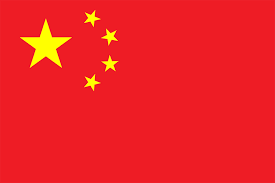-
China's economy is 40% state-owned – compare Lenin's NEP period, 70-77%
-
Soviet state-owned enterprises were designed to make a thing (like the water service, like the post office). Chinese state-owned enterprises are different: they are profit-making players in the market.
-
China has enterprises owned by local and provincial government – sometimes they compete with each other! So the state competes with itself on the market!
-
They can sell 49% of their stock on the stock market, even to foreigners.
-
The State-owned Assets Supervision and Administration Commission of the State Council (SASAC) is an institution directly under the management of the State Council. It is an ad-hoc ministerial-level organization directly subordinated to the State Council – http://en.sasac.gov.cn/sasacaboutus.html – It's like the Chinese statist Berkshire Hathaway. In theory, it can control a company as much as a shareholder can.
-
Li-Wen Lin & Curtis J Milhaupt write about Chinese corporate structure. They say when direct state industries (like post offices or Soviet bureaux) turned into profit-seeking state-owned things and essentially bought the party off, made it rich.



Communists don't engage in splitting/wrecking/name-calling. Communists don't drop investigations because they're scared of conflict (1 & 6). Communists seek the truth, follow antagonisms to their conclusion. They certainly don't shy away from seeking truth from facts out of fear that it might require reading several pages.
Having established the basic task-at-hand (to understand whether Chinese state-owned enterprises, have significantly diverged from the sort of bureaux that existed under Lenin, becoming instead profit-seekers) and set deviations of sectarianism and laziness (or an incorrect view that anything the Chinese government does can always be assumed to be correct without any investigation: "Our dogmatists are lazy-bones. They refuse to undertake any painstaking study of concrete things") let's set about the task....
It's mostly to do with these two, as far as I can see –
We Are the (National) Champions: Understanding the Mechanisms of State Capitalism in China, DOI: 10.2307/23530170 (64 pages)
Li-Wen Lin, Curtis J. Milhaupt, Bonded to the State: A Network Perspective on China's Corporate Debt Market, Journal of Financial Regulation, Volume 3, Issue 1, March 2017, Pages 1–39, https://doi.org/10.1093/jfr/fjw016 (39 pages)
The first source is notable for some pro-free-market assumptions, e.g. talking about "the detriment of entrepreneurship, innovation, and efficient capital allocation". It talks about the "vertical integration" of firms such and the CNNG (aluminium). It's worth pulling out this part –
The interesting thing to me here is the "trading relationships". There's an evident difference between what China has now and the Gosplan bureaux: both are vertically integrated, but the relationships between them are profit-based rather than plan-based.
The last paragraph on page 707 of the first source says that there are different types of enterprises, some probably more market-like and some more "authoritarian". That is to be expected in such a huge and complex economy of course, but it says something about the question under consideration.
The take-home point of the second source is that some state-owned enterprises bail out other ones (the Chaori example), giving them an edge over private firms who don't have those guarantees.
Was this meant to be a reply to my comment?